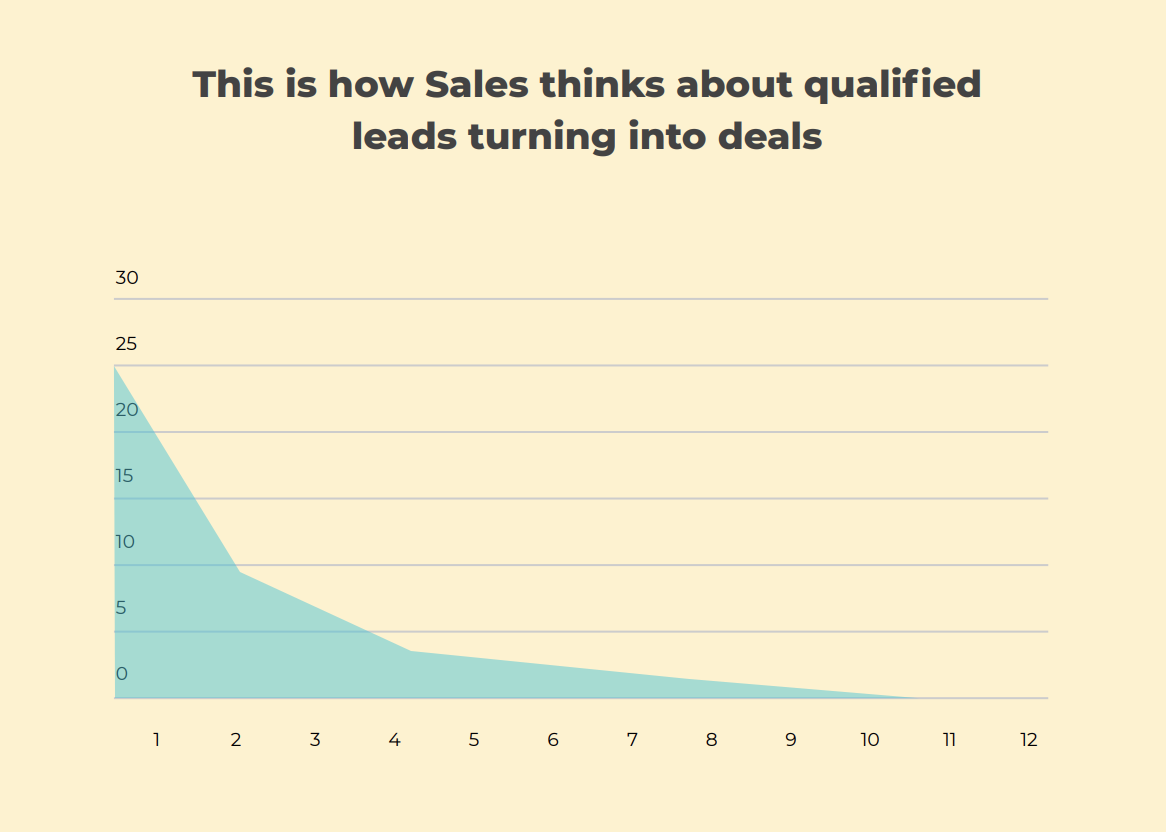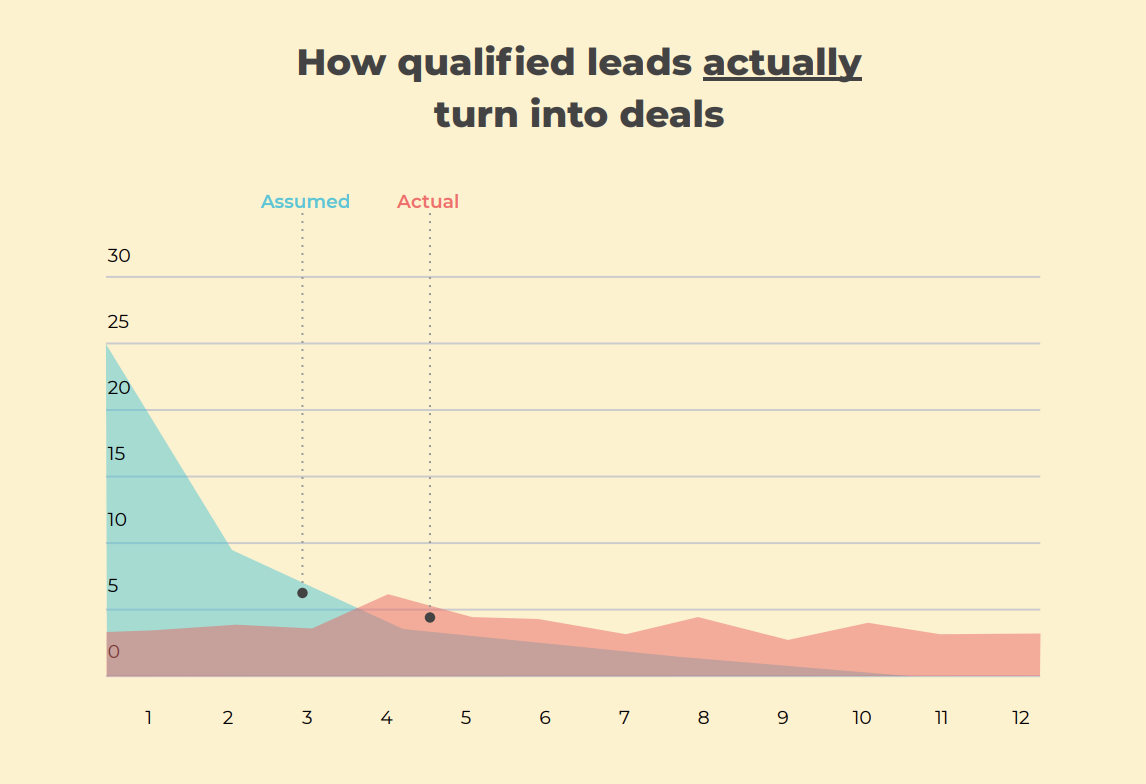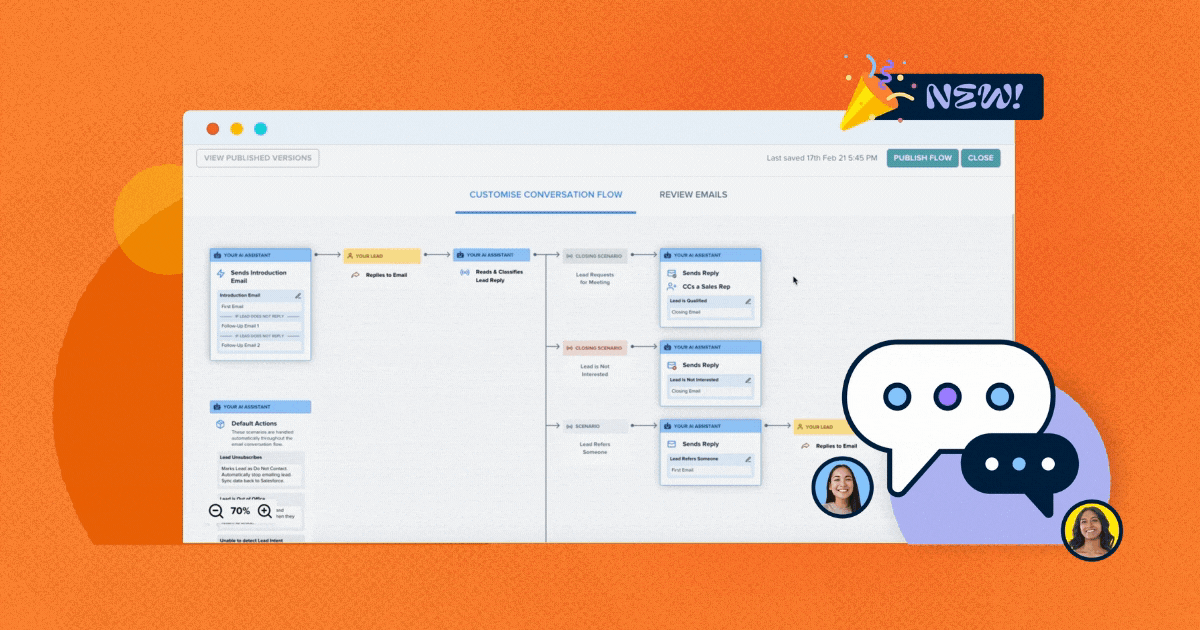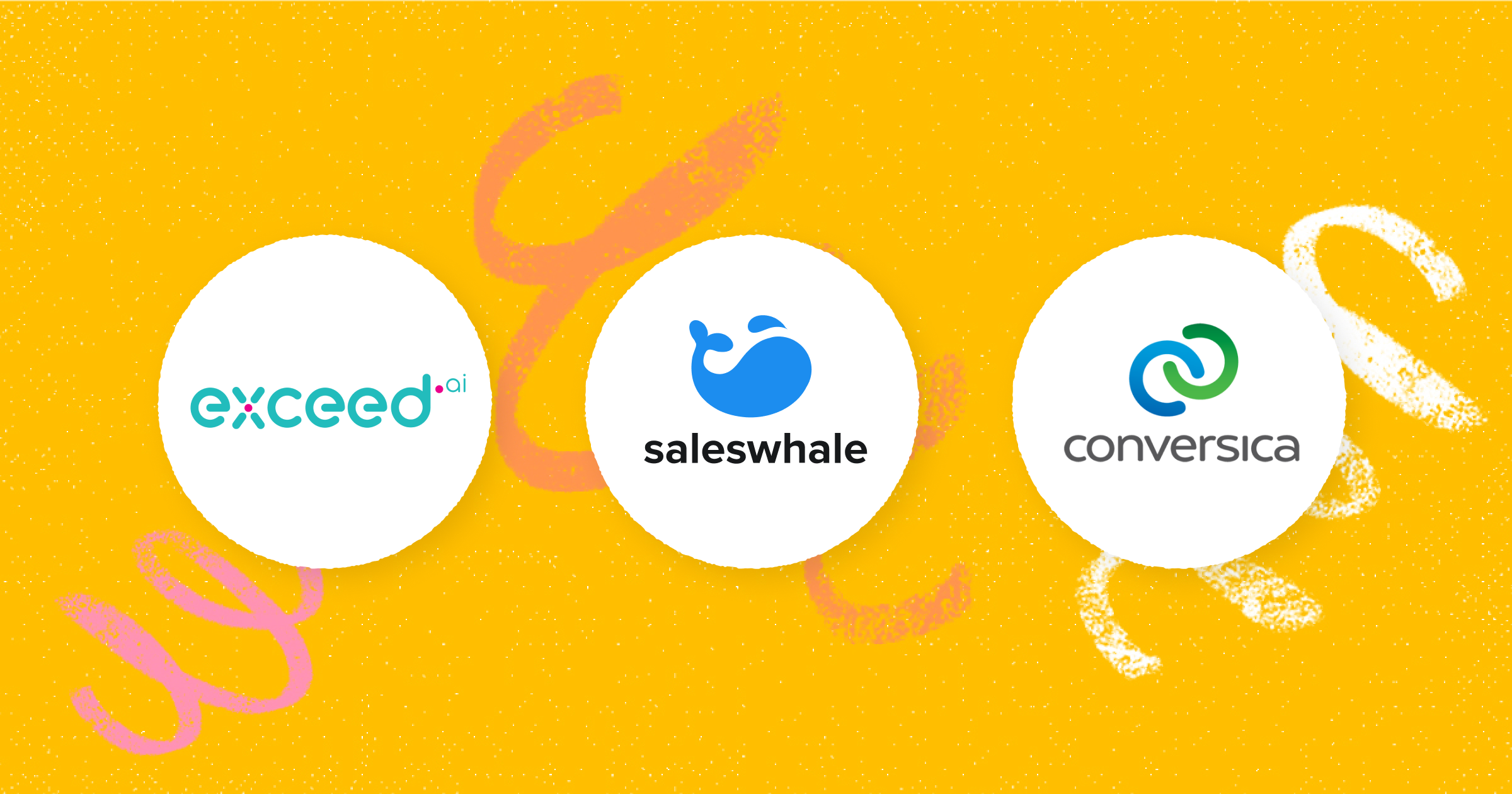Saleswhale Blog | 11 Min Read

I’m currently a demand generation and account-based marketing (ABM) marketer here at Saleswhale. But not too long ago, I was a full-time Sales Development Representative (SDR).
As an SDR, I carried a monthly quota of sales qualified leads (SQLs) that I had to generate for our AEs (account executives).
These SQLs were generated from cold outbound outreach, and from qualifying and converting dormant marketing qualified leads (MQLs).
It was tough, brutal, and back-breaking work. But I saw the SDR function as the tip of the spear for the entire company in pipeline generation, and I didn’t take my responsibilities lightly.
For context, back then, at least 70% - 80% of Saleswhale’s pipeline was SDR generated (cold outbound, or inbound MQL conversion).
This certainly contributed to a lot of latent stress and pressure. In hindsight, it probably wasn’t a job which I could have sustained for 3-4 years. Most of my SDR peers either got promoted, or burnt out and washed out, within 12 - 18 months.
Yet, I persevered - and survived. It certainly wasn't easy.
However, in spite of my efforts, we were facing some major issues:
Marketing’s MQL to SQL conversion rate was less than 15%. Our SQLs were converting to closed-won deals at a less than 20% rate. Because of this, for a period of time, we saw negative ROI from our marketing programs.
When we segmented our channels, we found out that only inbound, organic leads which requested a demo on our website were showing high ROI consistently. These leads were few and far between.
To make sure we are on the same page -- at Saleswhale:
Some of you might not have an SDR/AE model. You may be employing a “full-stack” sales model where a sales rep handles the entire process from lead-to-close. That's OK too.
Reflecting back on my days as an SDR, I found 3 common scenarios where a lead wouldn’t turn into a sales meeting/demo:
As I was trying to optimize my MQL to SQL conversion rate, I realized that most of the issues boil down to this:
The sales-readiness of each MQL.
This is the number one reason why I failed to convert leads handed over to me as an SDR.
When a lead becomes an MQL, we would deploy a specially designed sales cadence - characterized as a short burst:
We felt this approach made sense at the time - because of the assumption that their interest in Saleswhale peaks at the moment they become an MQL (and tapers off over time). So it was imperative that we get their attention and schedule the sales meeting immediately.
Yet by my recollection, most of us only converted only around 10% of the MQLs handed to us during this short burst. Majority of the time, we were flat out ignored.
We did convert a significant number of those MQLs eventually - after 90, 120 or even 180 days from when they first became an MQL.
With the benefit of hindsight, here’s why I think so:
When I looked at my data, I realized that a large percentage of marketing leads generated did eventually buy. However, not all of them will necessarily convert immediately.
This is echoed in the Four Marketing Challenges eBook we authored recently:

Also, I realized in a batch of marketing qualified leads, only a small percentage are “sales-ready” at a given point in time. Most were still too early in their research process.

As a result, we (the SDRs) spent a lot of time (especially at the apex of a campaign) chasing, calling, emailing prospects, for a meeting.. only to be greeted by silence.
And then, abruptly, at the 2-week mark, like clock-work - we give up.
This is the second most common scenario I experienced with MQLs that don’t convert.
Sometimes they would ask for more information on pricing, case studies, or product information.
A typical response would look something like this:
“Thanks for reaching out Yang. Could you send over some case studies / use cases with other B2B tech companies similar to us?”
What typically happens next varies tremendously from lead to lead.
Sometimes, a meeting would be booked swiftly after the additional information was sent.
Most other times, multiple follow-ups would be required after the initial packet of information was sent, with mixed success in securing the meeting afterwards.
A significant number of leads would go “dark” after the initial information was sent. After a pre-set number of follow-up attempts were made, I too, would then move on.
I spend quite a lot of time thinking about leads that “go dark”.
Could I have crafted better replies to their questions?
Could we have nurtured them better via marketing automation in the first place?
Or maybe the lead just wasn’t “sales-ready” at that moment in time, and there was nothing else I could have done.
I wished I had ran more experiments with my approach and messaging back then to try to "resuscitate" these leads.
Most of the marketing qualified leads (MQLs) handed over to us were not sales-ready.
As a result, the SDR team started to make subjective decisions on what types of leads to focus our efforts on.
Some SDRs would get “logo-fever”, and spend a disproportionate amount of time on certain favourite logos. Other SDRs were fixated on certain personas or verticals, to the detriment of other MQLs.
Speaking from personal experience, I tended to not pay as much attention to leads who are initially unresponsive, regardless of fit or ideal customer profile (ICP).
Whatever the case may be, most of the unresponsive leads would end up being routed back to our marketing team.
Why didn’t I give every single marketing qualified lead routed to me 100% of my efforts?
Was it because I was lazy?
Was it because I didn’t care about the company?
No. I cared a lot.
The truth is, it just wasn’t humanly possible to focus on every single lead with 100% focus and intensity.
I decided to lean more towards leads which seemed immediately more inviting, because I was determined to hit my monthly quota. I had to optimize relentlessly on what gave me the best results.
The side-effect was that Marketing started to complain -
“The SDR team reaches out to our MQLs, but with too little or inconsistent touches.”
From their perspective (and I see this now as a marketer!), this was an issue because the SDR team missed out on a significant number of potential leads. Leads which would have ended up going to our competitors.
Marketing’s overall MQL to SQL conversion rate was also severely affected.
Here’s the insidious thing:
Unless marketers have SDR or lead qualification experience before, they wouldn’t even fathom this was an issue.
They would stare at the low MQL to SQL rates, and deduce that the problem must be elsewhere upstream - and work on optimizing them.. without solving the highest-order bit.
Because, unless you are logging and tracking ALL sales activities, it’s really easy for the SDR team to say that they are “doing their best” with all the MQLs, and abiding to their SLA of timely “touches”.
I know, because I am guilty of the above. I’m not proud of it. But that’s the truth.
At this point, you must be thinking, why didn’t you guys use lead scoring for this?
Lead scoring is supposed to sift out “high propensity” leads from the tyre kickers -- so technically, it solves all our problems, right?
Well, we did. However, we ran into another problem: the accuracy of our lead scoring.
From my first-hand experience as an SDR, lead scoring does not produce leads of the same quality, or sales-readiness consistently.
For every Tier 1 (or “most likely to close”) lead that I received, they varied wildly in receptiveness to a sales meeting or call.
Interestingly enough, I don't think that we had an ineffective lead scoring model. In-fact, our Tier 1 leads were our best converting leads - both in-terms of MQL to SQL rates, and actual closed-won deals.
The reason is because lead scoring can’t predict or deduce accurately whether a lead is ready to speak to sales.
A lead’s demographic fit and behavioural engagement with our web page, email marketing or gated content are, at best, indicators of potential interest.
I’ve had many Tier 1 leads which did not convert at all into SQLs. And I’ve had plenty of lower-tiered leads that converted easily, into both meetings and closed-won deals.
I realized quickly, that lead-scoring is a lossy indicator if a lead wants to speak to sales, or take a sales meeting.
So, after a while, the SDR team learnt to take the lead scores with a pinch of salt - and we were right back to where we started.
Consider this other issue as well - this is something that I did not have insight into when I was an SDR, but I now see as a marketer:
If our lead scoring was already filtering leads inaccurately to the SDR team, what are the chances that it was also filtering leads inaccurately away from us?
What if our lead scoring were weeding out good leads? Thereby driving down our MQL to SQL conversion even more?
Unfortunately, we did not see this back then. Most of these “underserved” leads were just returned to a passive lead nurture track, and never surfaced to us (the SDRs).
With the benefit of hindsight, this would have made a huge difference for us back then.
In any case, we decided to make drastic changes to optimize our MQL to SQL conversion rates.
Recall that I mentioned earlier we saw the most success from qualified leads who explicitly requested a demo from our website?
We call these sales-ready leads “hand-raisers”.
So the question became - “how do we actively generate more hand-raisers?”
After I got promoted from an SDR into our marketing team, it became very apparent that the most accurate signal of a sales-ready lead was when a lead explicitly states that they want to speak to our sales team.
So logically, if we wanted to focus on generating only sales-ready MQLs -- we should focus only on routing “hand-raiser” leads to sales. And nothing else.
This is counter-intuitive. And sounded dangerous. But bear with me.
It wouldn't have made sense if we only routed leads which requested a demo -- the volume was far too little to sustain a pipeline.
Nor would it have made sense if we routed every single lead to the SDRs to “qualify” if they were sales-ready first, before handing over "hand-raisers" to sales.
What we needed to do was to change the way we generated and converted leads altogether.
We decided to moved away from the traditional SDR model completely.
So for one quarter, Saleswhale committed to doing exactly this.
We pivoted to an account-based marketing approach. We repurposed the SDR function to do “higher-value work” by being tightly integrated within our marketing process. We automated everything else.
Here’s what we did:
We only considered leads qualified if they were “hand-raisers”. Either through requesting for a demo on our website, or explicitly stating they were open to speak to sales via our email outreach.
All other leads were continuously nurtured with ABM ads, marketing automation tracks, and automated, programmatic intermittent “short burst” outreach (i.e. when they click on an ad or download a piece of content).
Most of the nurtured “hand-raisers” came from the cyclical “short bursts”.
The results we got from this were astounding.
Our MQL to SQL conversion rose to 36% in Q1 2020, and we closed more deals in a single month in March 2020, than we did around the same period in an entire quarter in the previous year. It was a massive win for the sales and marketing team, to say the least.
Now don’t get me wrong, I’m not saying you should blow up your lead funnel and go all in on “hand-raisers”, or ABM.
But if I were to summarize what we got wrong initially, and what ended up working for us eventually, it would be as follows.
What we got wrong:
What we eventually got right - after much adjustment and tinkering:
Either a lead opts-out, is disqualified, or else they are constantly moving towards becoming sales-ready “hand-raisers” to hand over to sales.
I came onboard, fresh out of school, as an SDR to Saleswhale. And I took the role because I saw it as a stepping stone towards my dream career in marketing. After all, there aren’t many entry-level marketing positions - especially in the SaaS world.
From what I gather, this mindset was more or less echoed by my SDR peers back then. Most of us, if not all, viewed the SDR role as a stepping stone towards more “senior” roles in sales or marketing.
The role in its traditional form today, is presented and accepted as something transitional and something you have to go through as a "rite of passage”; sometimes you even have (honest) employers market it this way.
However, as I hopefully made the case for, it doesn’t have to be like this.
There are better ways to deploy SDRs strategically that will benefit both marketing and the SDR team.
And hopefully, maybe we’ll start seeing more people choosing to specialize in sales development too.
If you’re interested to learn more about the “every lead in motion” concept -- including how to automate it, how other B2B marketing teams are adopting it, and the benefits they’re seeing:


Demand Gen Manager at Saleswhale
Sign up for cutting edge ideas on conversational marketing, AI assistants and martech.

Saleswhale for Salesforce allows you to build powerful automated lead conversion workflows. This allows you to re-engage with your neglected marketing leads at...
19 APR 2021

Demand generation and marketing teams generate more leads at the top of the funnel than ever in this new digital-first world. Saleswhale helps ensure those...
1 MAR 2021

Marketers that focus on MQLs end up doing the wrong things in order to achieve the metrics. So I changed it.
16 JUN 2020

Conversica isn't the only player out there. Learn how Saleswhale and Exceed.ai compare and make an informed decision.
15 APR 2021
By providing your email you consent to allow Saleswhale to store and process the personal information submitted above to provide you the content requested.
You can unsubscribe at any time by clicking the link in the footer of our emails. For information about our privacy practices, please visit our privacy page.